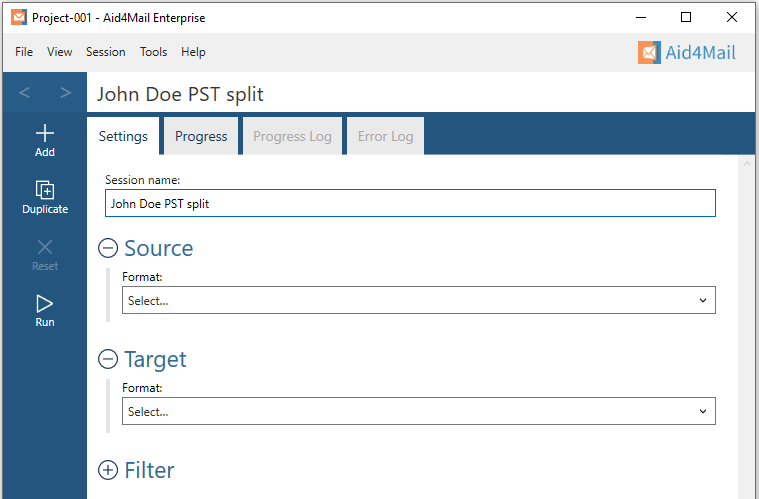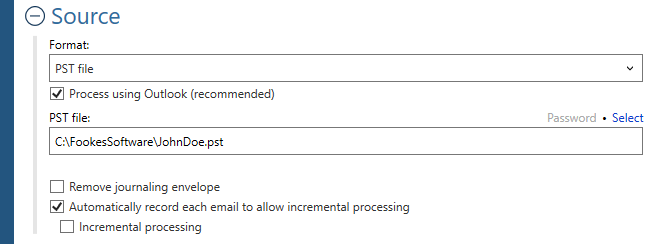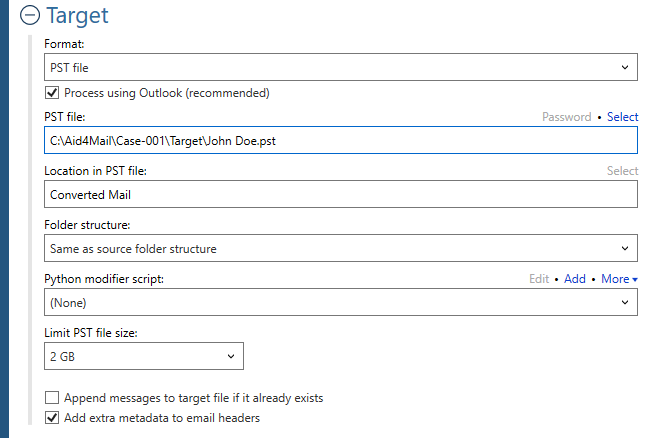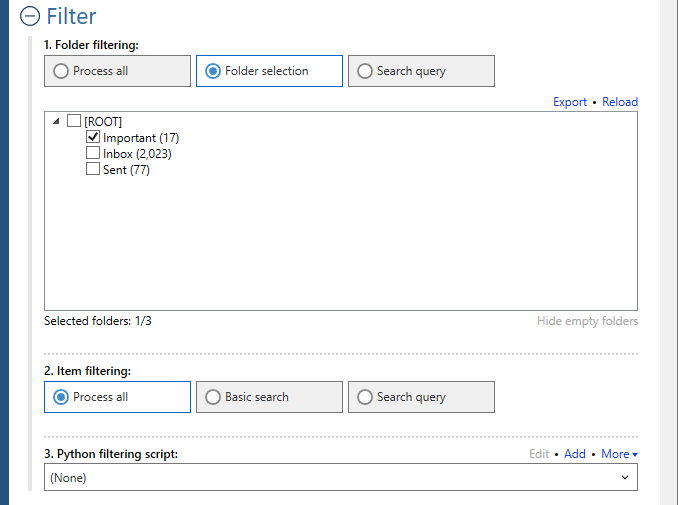Welcome to Fookes Software’s support portal
How to split PST file into smaller PST files (with or without Outlook)
Aid4Mail makes it easy to split an existing PST file into smaller PST files. Compared to competing tools:
- Aid4Mail is faster.
- More accurate with no data loss.
- Offers more control over the conversion process.
Many tools claim they can split Outlook PST files but be aware of lost metadata, folder hierarchy and status information. Aid4Mail is the best PST splitting tool on the market and can accurately split PST files.
This article will show you how to split a Microsoft Outlook PST file using Aid4Mail. We have been developing Aid4Mail for over 20+ years and have lots of experience working with the MS Outlook PST file type. Aid4Mail can merge, combine, split and search Outlook PST files quickly and accurately.
If you don’t yet have a copy of Aid4Mail, you can use our free trial version to test it out or purchase a low-cost 1-month Aid4Mail Converter license.
Please follow the steps below. For any setting that’s not specifically mentioned, you can either use the default (preset) value or consult the Aid4Mail User Guide for details.
Step 1: Open Aid4Mail’s settings

- In Aid4Mail, select the Settings tab.
- Update the Session name to so it describes for the task at hand. In this example, we will be splitting John Doe’s PST file into smaller PST files so we’ve entered John Doe PST Split as the session name.
- Below the session name there are three sections: Source, Target and Filter. Each can be displayed or hidden by selecting the +/- symbol next to the section heading. This tutorial requires them all to be displayed.
Step 2: Set PST as your source

- In the Format list, select PST.
- Choose whether to Process using Outlook. This means using Outlook’s internal engine (MAPI) to open and read the PST file. Using Outlook’s engine is faster but requires Outlook to be installed on the same computer as Aid4Mail. If you don’t have Outlook installed, turn this option off.
- Set the Location of your PST file, either writing it directly in the PST file: field or by using the Select button to browse your file system.
- Choose whether to Remove journaling envelope if your email files are journaled.
Step 3: Set PST file as your target

- In the Format list, select PST file.
- Choose whether to Process using Outlook. This means using Outlook’s internal engine (MAPI) to create the PST file (it has no effect on the reading of your source mail). Using Outlook’s engine is faster but requires Outlook to be installed on the same computer as Aid4Mail. If you don’t have Outlook installed, keep this option off.
- Specify where you want your PST file to be saved. You can write directly in the field or use the Select button to browse your file system. You can also set a Password to protect the file.
- Optionally, set a folder Location in PST file where your converted mail will be saved. In our example, we have set a folder called Converted mail. This folder doesn’t exist yet but Aid4Mail will create it.
- Select an option for the Folder structure of the exported mail. Usually you’ll want to keep it the same as the original, so choose Same as source folder structure.
- As we want to split the PST file into smaller PST files, you will use the Limit PST file size to accomplish this. In our example, we’ve set it to 2GB. Once the file has reached its limit, subsequent emails will overflow into a second PST file. And once that one’s full, then into a third, and so on. For example, if the PST file is 10GB in size, you will end with five 2GB PST files once the conversion finishes.
Step 4: Set your filter (optional)
- Under Folder filtering, pick Folder selection. You PST files folder structure will appear below.
- Select the folders you want Aid4Mail to process. The others will be skipped.
Step 5: Run your PST to PST conversion
Select the Run button or Session > Run from the menu. Aid4Mail will split your chosen PST file into smaller PST files. It will automatically open the Progress tab so you can monitor what’s going on. Once finished, you will find full reports in the Progress log and, if relevant, the Error log.
Step 6: Open the PST files in Outlook
You can do this by selecting File > Open > Outlook Data File from Outlook’s main menu (older versions of Outlook may use different menu names).
That’s it!
We hope you found this tutorial helpful in showing you why Aid4Mail is the best tool to split Outlook PST files on the market. As shown above, Aid4Mail can split large PST files to smaller PST files reliably and quickly. On top of that, Aid4Mail can complete the PST splitting with or without Outlook installed on the machine.
If you’re looking for further information, first take a look through the Aid4Mail user guide and our knowledge base articles.
If you still have questions, don’t hesitate to contact our award-winning Helpdesk.
If you’d like to buy an Aid4Mail license, please visit the online store.
Or if you’d like to try Aid4Mail first before purchasing, download a free trial and run your own test splitting a PST file. We want you to have full confidence in Aid4Mail!
